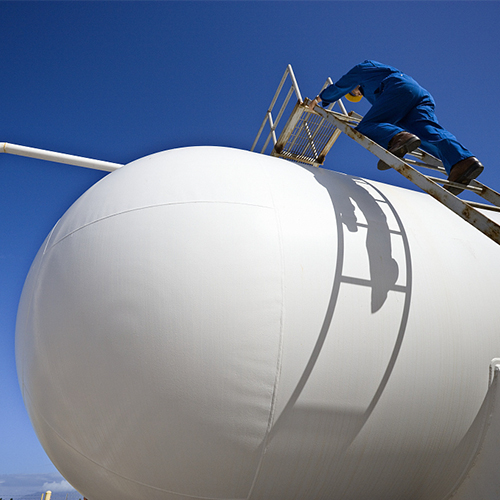Classifications of pressure vessels and media
Pressure vessels generally refer to equipment used for reaction, mass transfer, heat transfer, separation, storage and other processes in industrial production, and can withstand a certain pressure. They operate under severe environmental conditions, such as high temperature, high pressure, and media that are flammable, explosive, toxic and corrosive. In order to facilitate the design and safety management, pressure vessels and media are usually classified.
The hazard of the medium refers to the severity of chronic health hazard caused by the explosion or the frequent leakage of the medium due to the accidents caused by pressure vessels in the production process, indicated by the degree of toxicity and the degree of explosion.
Toxicity degree of media
Taking into account of factors such as acute toxicity, maximum allowable concentration and chronic hazard, the toxicity degree of the medium is divided into four levels (extreme, high, moderate and mild). - The maximum allowable concentration of extreme-level media should be less than 0.1 mg/m3, that of high-level media is between 0.1 mg/m3 and 1.0 mg/m3, that of moderate-level media is between 1.0 mg/m3 and 10 mg/m3, and that of mild-level can be larger than 10 mg/m3.
Explosive media
For a mixture of gases, or vapors, air, if its lower explosive limit is less than 10% of the medium, or the difference between the upper and lower explosive limits of the mixture is greater than or equal to 20% of the medium, this medium is classified as an explosive medium.
Media classification
Media used in pressure vessels include gases, liquefied gases, and liquids with a maximum operating temperature above or equal to the normal boiling point. According to the danger degree, they are divided into two groups. The first group includes chemical media with extreme-level toxicity, explosive media and liquefied gases. The second group of media are the rest.
Classification of pressure vessels
According to the relative pressure of the inside and outside of the vessel, pressure vessels can be divided into internal pressure vessels and external pressure vessels. The internal pressure of the internal pressure vessel is greater than the external pressure, and the external pressure vessel is the opposite. For an external pressure vessel, when the external environment of the vessel is atmospheric pressure and the internal absolute pressure is less than one bar, it is called a vacuum vessel. According to the design pressure (p), the internal pressure vessel is divided into the following four classes: low pressure vessel (0.1 MPa≤p<1.6 MPa), medium pressure vessel (1.6 MPa≤p<10.0 MPa), high pressure vessel (10.0M Pa≤p<100.0 MPa), ultra high pressure vessel (p ≥ 100.0 MPa).
According to installation methods, pressure vessels can be categorized into static and mobile pressure vessels. And usually, the design and manufacturing requirements of the latter one are more strict.
According to principles and applications, pressure vessels can also be divided into reaction vessels (for containing the reactants taking part in a reaction), heat exchangers (for transferring heat from one medium to another), separators (for separating fluids, gases, pressure balancing and buffering) and storage tanks (for holding liquids, gases, liquefied gases and other media).

The hazard of the medium refers to the severity of chronic health hazard caused by the explosion or the frequent leakage of the medium due to the accidents caused by pressure vessels in the production process, indicated by the degree of toxicity and the degree of explosion.
Toxicity degree of media
Taking into account of factors such as acute toxicity, maximum allowable concentration and chronic hazard, the toxicity degree of the medium is divided into four levels (extreme, high, moderate and mild). - The maximum allowable concentration of extreme-level media should be less than 0.1 mg/m3, that of high-level media is between 0.1 mg/m3 and 1.0 mg/m3, that of moderate-level media is between 1.0 mg/m3 and 10 mg/m3, and that of mild-level can be larger than 10 mg/m3.
Explosive media
For a mixture of gases, or vapors, air, if its lower explosive limit is less than 10% of the medium, or the difference between the upper and lower explosive limits of the mixture is greater than or equal to 20% of the medium, this medium is classified as an explosive medium.
Media classification
Media used in pressure vessels include gases, liquefied gases, and liquids with a maximum operating temperature above or equal to the normal boiling point. According to the danger degree, they are divided into two groups. The first group includes chemical media with extreme-level toxicity, explosive media and liquefied gases. The second group of media are the rest.
Classification of pressure vessels
According to the relative pressure of the inside and outside of the vessel, pressure vessels can be divided into internal pressure vessels and external pressure vessels. The internal pressure of the internal pressure vessel is greater than the external pressure, and the external pressure vessel is the opposite. For an external pressure vessel, when the external environment of the vessel is atmospheric pressure and the internal absolute pressure is less than one bar, it is called a vacuum vessel. According to the design pressure (p), the internal pressure vessel is divided into the following four classes: low pressure vessel (0.1 MPa≤p<1.6 MPa), medium pressure vessel (1.6 MPa≤p<10.0 MPa), high pressure vessel (10.0M Pa≤p<100.0 MPa), ultra high pressure vessel (p ≥ 100.0 MPa).
According to installation methods, pressure vessels can be categorized into static and mobile pressure vessels. And usually, the design and manufacturing requirements of the latter one are more strict.
According to principles and applications, pressure vessels can also be divided into reaction vessels (for containing the reactants taking part in a reaction), heat exchangers (for transferring heat from one medium to another), separators (for separating fluids, gases, pressure balancing and buffering) and storage tanks (for holding liquids, gases, liquefied gases and other media).

